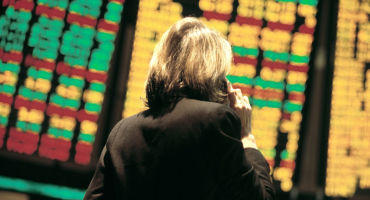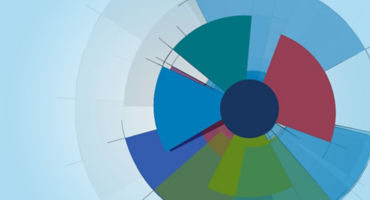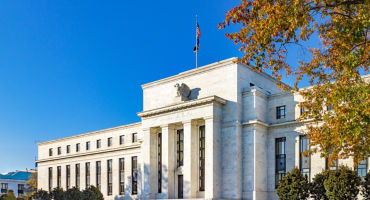- Macro Strategist
Skip to main content
- Funds
- Insights
- Capabilities
- About Us
- My Account
The views expressed are those of the authors at the time of writing. Other teams may hold different views and make different investment decisions. The value of your investment may become worth more or less than at the time of original investment. While any third-party data used is considered reliable, its accuracy is not guaranteed. For professional, institutional, or accredited investors only.
Today’s macro landscape represents a marked shift from a risk-asset-friendly environment to a challenging new regime. Investors must consider how to navigate a potentially much more volatile future given deglobalization, heightened inflation, and the potential for increased cyclicality. In our view, investing with a macro lens will be increasingly critical in the years ahead.
Here, we explore the investment implications of the end of quantitative easing (QE) programs, the state of the Chinese cycle, and an evolving outlook on Europe.
Over the last 10 years, there has often been a disconnect between risk markets and the macro backdrop as central banks pumped US$20 trillion of liquidity into the markets globally (Figure 1). This elevated risk assets to valuations significantly above where macro factors would have suggested. But now, every major central bank except for the Bank of Japan is reversing course and tightening policy. Notably, the developed world’s policy homogeneity (aggressive monetary policy and conservative fiscal policy) since the European sovereign crisis created correspondingly homogenous cycle and inflation outcomes.
As central banks shift from substantial net buyers to net sellers, we are moving into a sharply different liquidity environment that could create headwinds for risk assets. Importantly, over the past decade, different central banks’ QE policies have impacted different markets. For example, US QE influenced equity markets, while ECB QE had a greater impact on high-yield and investment-grade credit markets. As flows start to reverse, it is important to keep in mind how specific central bank actions could impact distinct markets.
With inflation, volatility, and cyclicality all increasing, we are also now in a world where we can no longer expect downside risk to be met by rate cuts and QE injections. Instead, fiscal policy will be the more common tool of choice and central banks will be focused on containing inflation pressures.
As this environment evolves, there will be a wider distribution of outcomes as countries adopt unique policy options based on their country- and region-specific circumstances. For instance, in recent years, aggressive use of fiscal policy put the US on a different trajectory from the rest of the world. Relative country stories like this are likely to become more prevalent and offer opportunities for active management.
Another crucial consideration as we navigate the current macro environment is the state of the Chinese economy. Recently, it has clearly contracted significantly, due in part to the country’s zero-COVID policy. It will be difficult to have conviction on where the bottom of the Chinese cycle will be found until we have more clarity on the future of this policy. However, any significant positive signal on COVID policy and COVID prevalence itself will be helpful to understanding when the cycle will turn.
Importantly, the last time a China slowdown occurred during COVID, many global economies did not slow as historical relationships would have suggested, as the impact was offset by reopening. Today, developed markets are facing a much different landscape. As China drives marginal demand for many commodities and exports, we believe this slowdown may have a higher chance of feeding through to the rest of the world due to lower demand, weak supply, and higher inflation. This may increase the chance of recession in many markets.
This environment could also have significant implications for the Chinese currency. China is currently preventing the currency from loosening as much as the relative growth story between China and the US implies. The CNY is very strong relative to a trade basket as there has been substantial demand in developed markets but that seems to be falling away. This dynamic will significantly depend on whether or not developed economies like the US move into a recessionary environment.
Though several factors seem to imply a negative outlook for Europe — most notably geopolitical conflict, an energy crisis, and inflation — a few key shifts make us more structurally optimistic on Europe than at any point in the last two decades. We’ve been structurally negative on Europe over the past 10 to 15 years due to a lack of integration combined with the inability or unwillingness of key European powers to establish pro-growth domestic policies and make adequate use of fiscal policy. But over the last year, Europe has seen a shift to a pro-fiscal environment that could mean European fiscal policy going forward may look dramatically different than it has for the last decade.
This does not mean all of Europe’s very real problems are fixed, but it could mean an end to the low-growth, low-inflation environment the market seems to expect. We expect greater macro dispersion across the region as well, producing opportunities for active investors, and particularly in industries that are poised to navigate this cyclical environment. We think this opportunity is not priced into European assets and is underappreciated by the market.
Markets are rapidly shifting, and in our view, it is critical for investors to prepare for increased cyclicality, volatility, and inflation. Importantly, we believe the end of QE, the evolving Chinese cycle, and a changing European market will contribute to macro opportunities and risks that make active management essential going forward.


The spending bubble driving corporate profits looks set to burst
Continue readingOil: The real influencer in the Venezuela intervention
Continue readingGeopolitics in 2026: Risks and opportunities we’re watching
Continue readingPrivate credit outlook for 2026: 5 key trends
Continue readingThe rising tide of AI: How it could lift US productivity, growth, and profits
Continue readingURL References
Related Insights

The spending bubble driving corporate profits looks set to burst
US corporate profits have been fueled by government deficits, low rates, and consumption — drivers now at risk, raising questions about the sustainability of market valuations.

Oil: The real influencer in the Venezuela intervention
Multi-asset Strategist Nanette Abuhoff Jacobson details the role of oil in the recent events in Venezuela and shares the investment implications.

Geopolitics in 2026: Risks and opportunities we’re watching
Geopolitical Strategist Thomas Mucha shares his outlook, highlighting conflicts to watch, the importance of national security, and investment opportunities.

Monthly Market Review — November 2025
A monthly update on equity, fixed income, currency, and commodity markets.

FOMC: Easing into uncertainty
Fixed Income Portfolio Manager Jeremy Forster profiles the Fed's December rate cut, labor market trends, inflation pressures, and the role of anticipated changes to FOMC leaders in 2026.

Private credit outlook for 2026: 5 key trends
Our private credit experts discuss five themes driving the asset class’s 2026 outlook, including public/private convergence, changing credit profiles, the growth of retail, and much more.

The rising tide of AI: How it could lift US productivity, growth, and profits
From an economic and market standpoint, a lot is riding on the future of artificial intelligence. Macro Strategist Juhi Dhawan sees plenty of reasons for excitement but also a need for patience along the way.

Are hedge funds the missing ingredient?
Inflation, volatility, and valuations — they all raise questions about portfolio diversification and resilience. Multi-Asset Strategists Nanette Abuhoff Jacobson and Adam Berger explain why multi-strategy and equity long/short hedge funds could provide the answers. They offer insights on adding allocations to a traditional portfolio mix and a recipe for manager selection.

Rapid Fire Questions with Ross Dilkes
In this edition of “Rapid Fire Questions,” fixed income portfolio manager Ross Dilkes shares his views on the Asia credit market—covering the macro outlook, China’s momentum, the most compelling opportunities across the region, and key risks shaping the next 12 months.

Investing in 2026: prepare for inflationary growth
Macro Strategists John Butler and Eoin O'Callaghan share their annual macro outlook and discuss likely implications for markets and investors. They outline four potential scenarios graded by level of probability.

Is all that glitters still gold?
Gold has delivered impressive gains thus far in 2025, but what does that say about market risks and the recent strong returns of stocks? Multi-Asset Strategist Nanette Abuhoff Jacobson offers her take on the precious metal and the case for diversification in today’s market.
URL References
Related Insights
Monthly Market Review — November 2025
Continue readingBy